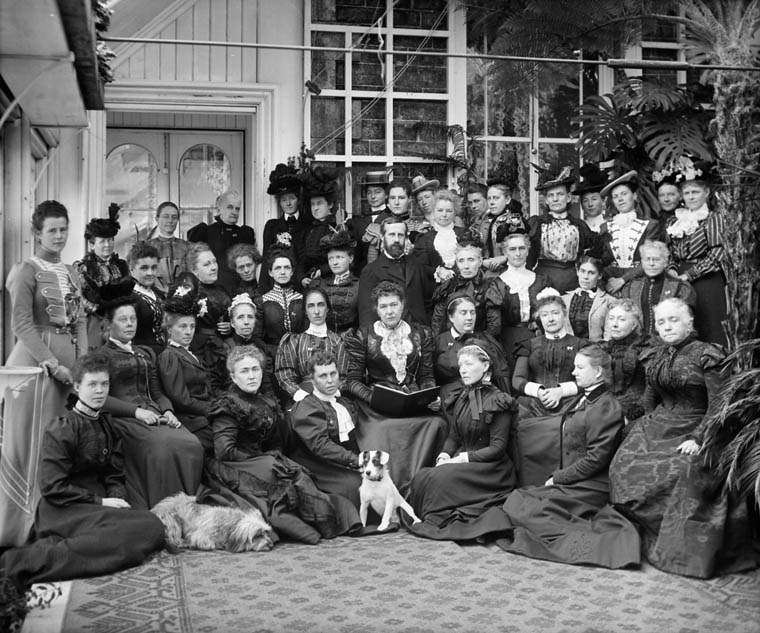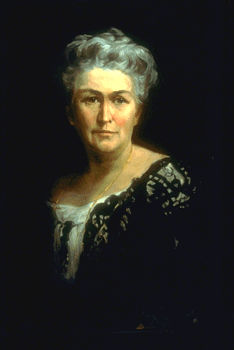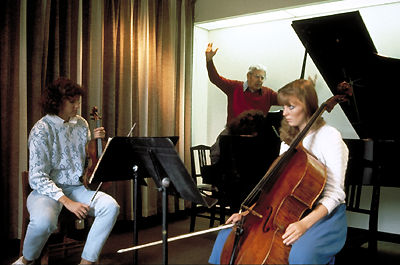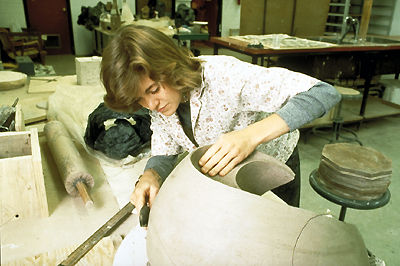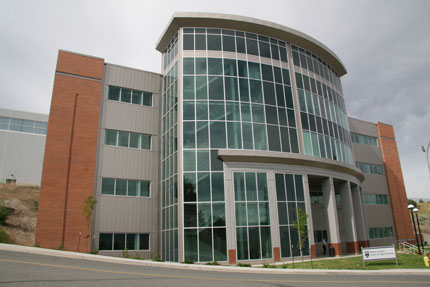Adult education in Canada is both a field of practice and (since the 1960s) a field of study. According to United Nations Educational, Scientific and Cultural Organization (UNESCO), as a field of practice, adult education denotes the entire body of organized educational processes, whatever the content, level or method, whether formal or informal, and whether the processes prolong or replace initial education in schools, colleges, universities or apprenticeship systems. The term "adult" usually means someone beyond the legal school-leaving age. Other than that, there is no upper age limit for learning. The term “lifelong learning” is also used to refer to adult education.
University academic programs
As a field of study, adult education was interdisciplinary originally, borrowing from psychology, sociology, history and philosophy. University academic programs in adult education are concerned with teaching as well as research. All provinces have at least one master's program in adult education (or related area such as higher education, human resource development, distance education, workplace education, community development or continuing education). There are also a number of doctoral degrees in Canada with the larger programs centred at the University of Toronto, University of Calgary and University of British Columbia.
These graduate programs prepare instructors, counsellors, community workers, administrators, evaluators, trainers, theorists and professional development coordinators. Adult education is therefore really a generic term, variously used to mean a program, a movement, a subject matter and sometimes, a method. In particular, it reflects a specific philosophy about learning and teaching based on the assumption that adults can and want to learn, that they are able and willing to take responsibility for that learning, and that the learning itself should respond to their needs.
History of Adult Education in Canada
Adults have always been engaged in learning, whether for survival, creativity, communal and individual interaction, or personal growth. In the 1800s the Mechanics' Institutes in Ontario, Québec and Nova Scotia provided information and learning opportunities to workers. Before Confederation, Queen's University was involved in extramural or extension work by offering public lectures; and the YMCA offered night classes for adults and educational programs for the military. Farmers' Institutes were established. By the late 1800s: the National Council of Women was founded; home and school associations had expanded; public lectures were being given in many communities; Women's Institutes had been established (see Federated Women’s Institutes of Canada); and educational programs were being organized by religious and other groups. All these programs were developed in response to adult needs and interests.
Where organizations offering appropriate programs did not already exist, new organizations were created or existing ones changed their mandate of responsibility. An important related development was the establishment of and the rapid increase in libraries, such as those developed later by Jessie Mifflen in Newfoundland, Helen Gordon Stewart in British Columbia and Nora Bateson in Prince Edward Island.

In 1899 Frontier College was established by Alfred Fitzpatrick to extend learning opportunities to those adults (mostly men) who lived and worked in remote communities in areas of work such as logging, mining and in railway camps (see literacy). Much later, Frontier College and other organizations extended educational services to people in prisons, factories and farm kitchens, and to fishermen, rural people and immigrants, as well as those on the street.
From 1900 to 1925 programs for adults continued to expand. Khaki University was organized in England for Canadian military personnel returning to Canada after the First World War. During this time the Workers' Educational Association, which provided opportunities for working people, was introduced to Canada from the UK. With the development of the West, universities extended their educational services to rural and remote communities by means of lectures, debating competitions, musical concerts and motion pictures. Indeed, the University of Alberta and University of Saskatchewan were originally set up to offer extension courses. In the mid-1920s the University of Alberta used radio for Educational Broadcasting and established the Banff School of Drama (today Banff Centre)in the early 1930s.
The efforts of St Francis Xavier University in Antigonish, Nova Scotia, were especially effective in helping people affected by the Great Depression, culminating in the establishment of an extensive cooperative movement (see Antigonish Movement). Later the Coady International Institute was established to provide training for representatives from developing countries. In 1946 Nova Scotia was the first province in Canada to institute an Adult Education Division as a unit of its Department of Education. The division's first director was Guy Henson.
Experimental work in public broadcasting, the formation of the Canadian Institute on Public Affairs (see Couchiching Conference), the founding of the National Film Board (1939) and two national radio forums in the 1940s — Citizens' Forum (1943) and Farm Radio Forum(1941) — all made use of media technology for learning and educating. Later developments included the use of satellite and television.
In 1935, the Canadian Association for Adult Education was established, with E.A. (Ned) Corbett as its first executive director. Prior to taking up this position, Corbett was director of the University of Alberta's Department of Extension, and was involved in the Citizens' Forum, Farm Radio Forum and the Banff Centre for the Arts.
In 1958 the establishment of the Quetico Residential Conference and Training Centre in northwestern Ontario provided adults with further opportunities for learning. From the 1930s to the 1960s, the Canadian Chamber of Commerce initiated educational programs. The Labour College of Canada was established in Montréal (1962) and there was increased government support for training and education, e.g., the Technical and Vocational Training Assistance Act in 1960 and the Agricultural Rehabilitation and Development Act in 1961 (see Higher Education; Technical Education).
Internationally, Canadians contributed to the development of adult education through such organizations as the International Congress of University Adult Education and UNESCO. With support of participants from the UNESCO conference in Tokyo (1972), and under the leadership of a Canadian adult educator, Dr. James Robbins Kidd, the International Council for Adult Education (ICAE) was established in 1973. After Dr. Kidd died in 1982, the ICAE established an annual J. Roby Kidd Award for significant and innovative work in adult education. Other Canadian leaders of the ICAE include Budd Hall and Paul Bélanger.
Four major national adult education associations have been founded in Canada: the Canadian Association for Adult Education (CAAE, 1935; now defunct); the Institut canadien d'éducation des adultes (ICEA, 1952), which primarily serves the French-language sectors of adult education in Canada; the Canadian Association for University Continuing Education (CAUCE, 1954); and the Canadian Association for the Study of Adult Education (CASAE, 1981), which publishes the Canadian Journal for the Study of Adult Education.
Structures and Agencies
Continuing education has become a way of life for many adults in Canada. Organized non-formal learning exists at all levels of government and within trade unions, cooperatives, industrial and commercial enterprises, hospitals, prisons, religious as well as cultural organizations, and health and fitness programs. Adult education takes place in factories, offices, gymnasiums, lecture halls, classrooms, libraries, museums, residential centres and churches, through a wide variety of teaching and learning methods, and increasingly through the Internet.
Adult education also takes place in formal settings, as part of credited programs within educational institutions and through online venues. For example, the rapid expansion of the community college and CEGEP systems in the 1960s and 1970s added greatly to the educational resources available to adults. Usually the structure of adult education is the responsibility of an instructor or a planner, or in the case of industry and government, a person in charge of professional development.
According to research on formal and informal learning in 1998, 2004 and 2010, by the Work and Lifelong Learning Research Network at the Ontario Institute for Studies in Education/University of Toronto, about half of the population aged between 25 and 64 has received further education, which is about the average for Organization for Economic Co-operation and Development (OECD) countries. Yet, most Canadians participate regularly in informal learning, which is often not recognized or measured, leaving many workers overqualified and underemployed.
Issues and Implications
The attempts to develop government and institutional legislation that will economically support adult education parallel the increasing involvement of adults in educational programs. Also, many barriers, such as geographical distances and physical handicaps, prevent certain groups (e.g., the disabled, the isolated, the elderly, the undereducated, certain cultural groups and women with small children) from participating in these programs (see distance learning). As with earlier studies, it continues to be the case that the higher one's educational level, the more likely one is to continue participating in education.
As adult education develops as a field of practice and a medium for research and study, participation and support will also have to increase. Within the context of adult education itself, the varied ways of learning that have been developed have blurred the formerly rigid roles of teacher and student, a fact that has been held up as proof that all adults, whether teachers or students, have something to teach (from life experience or from training) as well as something to learn from each other. Adult education as a field of practice and study has made an indelible contribution to society through its expression of respect for adults as responsible learners, as instigators of their own learning processes, and as valuable resources.
See also History of Education

 Share on Facebook
Share on Facebook Share on X
Share on X Share by Email
Share by Email Share on Google Classroom
Share on Google Classroom
